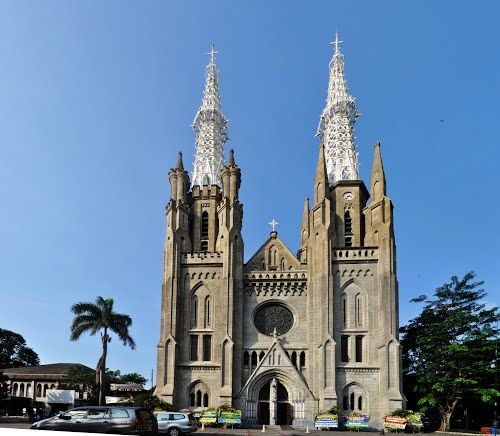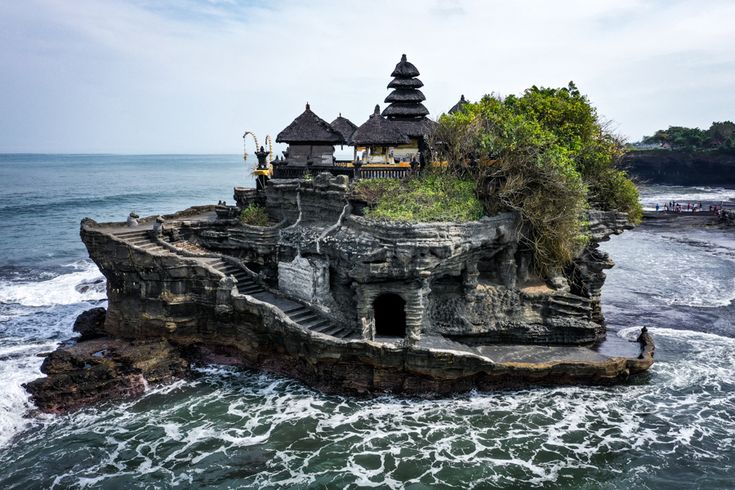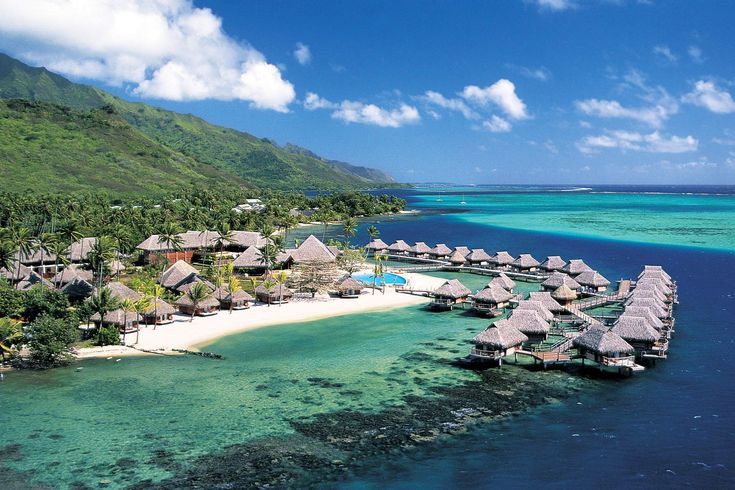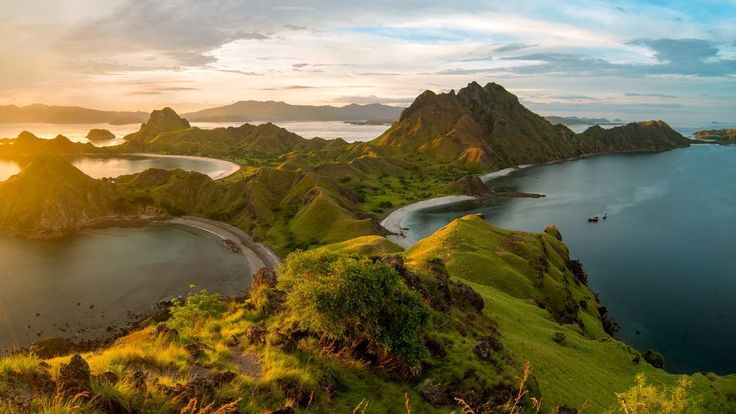Best Pleace To Travel In Indonesia
1.Jakarta (Special Capital Region
Jakarta (Indonesia)

Indonesia, the world’s largest archipelago, is a nation rich in cultural diversity, natural beauty, and vibrant history. Spread across more than 17,000 islands, Indonesia is home to hundreds of distinct ethnic groups, each with its own languages, traditions, and customs. The country is renowned for its stunning landscapes, which range from tropical beaches and lush rainforests to active volcanoes and terraced rice paddies.
Some of Indonesia’s most famous destinations include Bali, known for its beaches, temples, and unique culture; Jakarta, the bustling capital city; and Yogyakarta, a center of Javanese culture and home to the ancient temples of Borobudur and Prambanan. Indonesia’s biodiversity is among the richest in the world, with numerous species of plants and animals, many of which are endemic to the region.
The nation has a complex history, with influences from Hinduism, Buddhism, Islam, and European colonialism, all contributing to its rich cultural tapestry. Today, Indonesia is a vibrant democracy with a rapidly growing economy, and it continues to be a major cultural and economic hub in Southeast Asia.
Jakarta Cathedral, officially known as the Church of Our Lady of Assumption, is a prominent neo-gothic architectural marvel located in Central Jakarta, directly across from the Istiqlal Mosque. Completed in 1901, the cathedral stands as a symbol of Jakarta’s religious and cultural diversity, featuring striking tall spires, intricate stained glass windows, and elegant wooden pews. It serves as the primary Roman Catholic church in the city and is known for its historical significance, hosting major religious ceremonies and cultural events. The cathedral’s design reflects a blend of historical influences and local heritage, making it an important landmark and a popular destination for both locals and tourists. Its striking bell towers, reaching approximately 60 meters in height, and the careful restorations it has undergone, underscore its role as a key part of Jakarta’s architectural and spiritual landscape.
Best months to visit in Jakarta
Weather: The dry season offers clearer skies and less rain, which enhances the experience of exploring the cathedral and nearby attractions.
Events: Visiting during special religious or cultural events, such as Christmas or Easter, can provide a unique experience, as the cathedral often hosts significant ceremonies and services.
Avoiding Crowds: While the cathedral is a popular site year-round, visiting during weekdays outside of major holidays or religious events can help you avoid the busiest times and enjoy a more peaceful visit.
Open Days And Timing of Jakarta
Daily Visits: The cathedral is open to visitors daily.
Mass Times:
- Weekdays: Morning mass is usually held at 06:00 and 18:00.
- Saturdays: Masses are at 06:00, 18:00, and sometimes an additional evening service.
- Sundays: There are multiple services, often at 07:00, 09:00, 11:00, and 18:00.
Visitor Hours:
- General Visit: Visitors can explore the cathedral from 09:00 to 17:00, though these hours can vary, especially during religious services or special events.
Ticket of Jakarta
Jakarta Cathedral does not typically charge an admission fee for visitors. Entry is generally free, as it is an active place of worship. However, donations are often welcomed to support the maintenance and activities of the cathedral.
If you are visiting as part of a group or for a special event, it’s advisable to contact the cathedral in advance to arrange any specific tours or to confirm any potential fees or requirements. For the most current information, checking the cathedral’s official website or contacting them directly is a good idea.
Famous places of Indonesia
Bogor: About an hour’s drive from Jakarta, Bogor is known for its beautiful botanical gardens, the Bogor Botanical Gardens, and the Presidential Palace. The city is also a gateway to the lush landscapes of West Java.
Bandung: Approximately 2 to 3 hours from Jakarta, Bandung offers a cooler climate and scenic landscapes, including tea plantations and volcanic craters. Key attractions include Tangkuban Perahu Volcano, Kawah Putih (White Crater), and the city’s vibrant shopping scene.
Puncak: Located about 2 hours from Jakarta, Puncak is a popular highland area known for its tea plantations, cooler temperatures, and beautiful views. It’s a great spot for a relaxing getaway and outdoor activities.
Tangerang: Close to Jakarta, Tangerang is known for its historical sites, such as the Old Banten Fortress, and the vibrant shopping and dining scene at places like Summarecon Mall.
Thousand Islands (Kepulauan Seribu): A group of islands located just north of Jakarta, these islands are perfect for a tropical escape with opportunities for snorkeling, diving, and relaxing on sandy beaches. Popular islands include Pulau Pramuka and Pulau Macan.
Cianjur: About 2 hours from Jakarta, Cianjur is known for its scenic beauty and historical sites, including the famous Cianjur Palace and the beautiful Cipanas Hot Springs.
- Karawang: Located around 1.5 hours east of Jakarta, Karawang offers attractions such as the Sanggabuana Hill and various cultural sites.
2.Bail
Bail (Indonesia)

Bali is a renowned island destination in Indonesia, celebrated for its stunning landscapes, vibrant culture, and unique charm. Known for its picturesque beaches, lush rice terraces, and volcanic mountains, Bali offers a diverse range of experiences. The island is famous for its rich cultural heritage, including traditional dance performances, art, and temples like Uluwatu and Tanah Lot. Bali’s cuisine is equally captivating, featuring dishes such as nasi goreng and satay. The island is a popular spot for relaxation and adventure, with activities ranging from surfing and snorkeling to exploring serene temples and enjoying vibrant nightlife. Whether seeking tranquility in Ubud’s rice fields or excitement in Seminyak’s bustling scene, Bali has something for every traveler.
Best months to visit in Bali
The best time to visit Bali is during the dry season, which typically runs from May to September. Here’s why:
Weather: During these months, Bali experiences less rainfall, lower humidity, and plenty of sunshine, making it ideal for outdoor activities, beach outings, and exploring the island.
Temperature: The weather is generally warm and pleasant, with temperatures ranging from 25°C to 30°C (77°F to 86°F), which is comfortable for sightseeing and relaxation.
Tourist Activity: While the dry season is popular and can be busy, it is also when the island is most vibrant and lively, with many festivals, events, and activities.
Sea Conditions: The sea is calmer, making it perfect for swimming, snorkeling, and diving.
Open Days And Timing of Bali
Temples and Religious Sites:
- Open Days: Typically open daily.
- Timing: Most temples are open from around 08:00 to 18:00. Some, like Uluwatu Temple, have specific visiting hours and may close earlier.
Museums and Cultural Sites:
- Open Days: Usually open daily, though some may be closed on certain holidays.
- Timing: Common hours are from 09:00 to 17:00 or 18:00.
Beaches:
- Open Days: Beaches are accessible year-round.
- Timing: Generally open all day, though facilities like beach clubs or lounges have specific operating hours.
Shopping and Markets:
- Open Days: Most markets and shopping areas are open daily.
- Timing: Typical hours are from 09:00 to 21:00, though some markets may close earlier.
Restaurants and Cafes:
- Open Days: Most are open daily.
- Timing: Common hours are from 07:00 to 22:00 or later, depending on the venue.
Tourist Attractions:
- Open Days: Generally open daily.
- Timing: Many attractions operate from 09:00 to 17:00 or 18:00.
Ticket of Bali
Ticketing information for Bali’s attractions varies depending on the specific site. Here’s a general overview:
Temples:
- Entry Fees: Many temples, like Tanah Lot and Uluwatu, have an entrance fee ranging from IDR 10,000 to 50,000 (about USD 0.70 to 3.50).
- Dress Code: Traditional dress (sarong and sash) is often required, which is usually provided at the entrance.
Museums:
- Entry Fees: Fees range from IDR 20,000 to 100,000 (about USD 1.40 to 7.00) for popular museums like the Agung Rai Museum of Art (ARMA) or the Bali Museum.
Parks and Natural Attractions:
- Entry Fees: Sites like the Bali Botanic Garden or Monkey Forest in Ubud may charge between IDR 20,000 to 100,000 (about USD 1.40 to 7.00).
Water Parks:
- Entry Fees: Water parks such as Waterbom Bali typically have tickets ranging from IDR 300,000 to 500,000 (about USD 21.00 to 35.00) depending on the age and package.
Cultural Performances:
- Entry Fees: Tickets for traditional dance performances, like the Kecak dance at Uluwatu, usually cost between IDR 100,000 to 200,000 (about USD 7.00 to 14.00).
Tours and Activities:
- Booking: Many tours and activities can be booked in advance through travel agencies or online platforms. Prices vary based on the activity and duration.
Famous places of Bali
Bali is well-positioned for exploring several nearby locations that offer diverse experiences. Here are some notable places to visit near Bali:
Lembongan Island:
- Distance: About 30 minutes by boat from Bali.
- Highlights: Known for its beautiful beaches, clear waters, and excellent snorkeling and diving opportunities. Nusa Lembongan is also famous for its relaxed atmosphere and seaweed farming.
Nusa Penida:
- Distance: Approximately 45 minutes by boat from Bali.
- Highlights: This island features dramatic cliffs, stunning beaches like Kelingking Beach, and natural wonders such as Angel’s Billabong and Broken Beach. It’s a great spot for adventure and nature lovers.
Nusa Ceningan:
- Distance: A short boat ride from Nusa Lembongan.
- Highlights: Known for its beautiful coastal views, the Blue Lagoon, and a more tranquil environment compared to its neighbors.
Ubud:
- Distance: About a 1.5 to 2-hour drive from southern Bali.
- Highlights: Famous for its lush rice terraces, art galleries, traditional crafts, and cultural attractions like the Sacred Monkey Forest Sanctuary and Ubud Palace.
Jimbaran:
- Distance: Approximately 30 to 45 minutes from central Bali.
- Highlights: Known for its seafood restaurants on the beach, beautiful sunsets, and relaxed atmosphere. It’s also close to the luxury resorts and spa services.
Canggu:
- Distance: About a 30 to 45-minute drive from southern Bali.
- Highlights: A trendy area with surf spots, stylish cafes, and a laid-back vibe. It’s popular for its vibrant nightlife and wellness retreats.
Tegallalang:
- Distance: About a 1-hour drive from Ubud.
- Highlights: Renowned for its stunning rice terraces and traditional Balinese village atmosphere. It’s a great spot for scenic photography and exploring local culture.
Bedugul:
- Distance: Approximately 1.5 hours from Ubud.
- Highlights: Known for its cool climate, beautiful Lake Bratan, and the Ulun Danu Temple. It’s a picturesque area ideal for nature walks and experiencing the highland scenery.
Tabanan:
- Distance: About an hour’s drive from southern Bali.
- Highlights: Offers natural attractions like the Jatiluwih rice terraces, which are a UNESCO World Heritage Site, and various cultural experiences.
3.Lombok (West Nusa Tenggara)
Lombok (Indonesia)

Lombok, located in West Nusa Tenggara, is a beautiful island known for its stunning natural landscapes and serene environment. It offers a more tranquil alternative to its neighboring island, Bali. Lombok is famous for its majestic Mount Rinjani, an active volcano that attracts trekkers with its challenging hikes and breathtaking views. The island is also renowned for its pristine beaches, such as Kuta and Senggigi, which are perfect for relaxation, surfing, and snorkeling. Lombok’s traditional Sasak culture is showcased in its villages and local crafts, adding a cultural dimension to the island’s natural allure. With its diverse landscapes, from waterfalls and rice terraces to beaches and mountains, Lombok offers a rich and varied experience for visitors seeking adventure and tranquility.
Best months to visit in Lombok
The best time to visit Lombok is during the dry season, which typically runs from May to September. Here’s why:
Weather: During these months, Lombok experiences minimal rainfall, lower humidity, and plenty of sunshine, making it ideal for outdoor activities like hiking, beach outings, and exploring.
Temperature: The weather is generally warm and pleasant, with temperatures ranging from 25°C to 32°C (77°F to 89°F), providing a comfortable environment for sightseeing and relaxation.
Activities: The dry season offers the best conditions for trekking Mount Rinjani, snorkeling, diving, and enjoying the island’s beaches.
Tourist Traffic: Although this period is popular among tourists, it’s still the best time to experience Lombok’s attractions without the heavy rains that can occur in the wet season.
Open Days And Timing of Lombok
Beaches:
- Open Days: Daily
- Timing: Generally open all day. Facilities like beach resorts or restaurants have specific hours.
Mount Rinjani:
- Open Days: Typically open year-round, but trekking may be restricted during the rainy season (January to March).
- Timing: Trekking usually starts early in the morning (around 2:00 AM for sunrise treks) and ends by late afternoon.
Waterfalls (e.g., Tiu Kelep, Sendang Gile):
- Open Days: Daily
- Timing: Typically accessible from morning until late afternoon. Some may have limited hours based on local guides or weather conditions.
Cultural Sites and Villages (e.g., Sasak villages):
- Open Days: Generally open daily.
- Timing: Often accessible during daylight hours, usually from around 08:00 to 17:00.
Gili Islands (Gili Trawangan, Gili Meno, Gili Air):
- Open Days: Daily
- Timing: Activities and tours typically run from morning to early evening. The islands are accessible year-round by boat.
Local Markets and Towns (e.g., Mataram, Senggigi):
- Open Days: Daily
- Timing: Markets usually open in the morning and close by late afternoon or early evening. Shops and restaurants have varying hours.
Ticket of Lombok
Mount Rinjani:
- Entry Fees: Trekking Mount Rinjani typically requires a permit, which costs around IDR 150,000 to 300,000 (about USD 10 to 20). This fee helps support park conservation and maintenance. Additional costs may include guide fees, porter fees, and camping equipment.
- Booking: Treks usually need to be booked through a licensed tour operator.
Beaches:
- Entry Fees: Most public beaches are free, but private beach resorts or clubs may charge for access or facilities.
- Booking: Not usually required for public beaches, but booking may be necessary for resort facilities.
Waterfalls:
- Entry Fees: Fees for popular waterfalls like Tiu Kelep or Sendang Gile generally range from IDR 10,000 to 50,000 (about USD 0.70 to 3.50).
- Guides: Some waterfalls may require a local guide or offer guided tours, which can be arranged on-site.
Gili Islands:
- Entry Fees: There are generally no entry fees for the islands themselves, but transportation costs (boat or ferry) and any activities or rentals (like snorkeling gear) will incur additional charges.
- Booking: Boat transfers to the Gili Islands can be booked in advance or on arrival.
Cultural Sites and Villages:
- Entry Fees: Visiting Sasak villages or other cultural sites may involve small entrance fees, usually around IDR 20,000 to 50,000 (about USD 1.40 to 3.50).
- Booking: Tours or visits may be arranged through local tour operators.
Local Markets:
- Entry Fees: Markets are typically free to enter.
- Shopping: Budget for purchases and any optional tours or experiences.
Famous places of Indonesia
Gili Islands:
- Distance: About 30 minutes to 1 hour by boat from Lombok.
- Highlights: The Gili Islands—Gili Trawangan, Gili Meno, and Gili Air—are known for their stunning beaches, clear waters, vibrant marine life, and relaxed atmosphere. They offer excellent opportunities for snorkeling, diving, and island-hopping.
Sumbawa:
- Distance: Approximately 1 to 2 hours by boat or a short flight from Lombok.
- Highlights: Sumbawa offers beautiful beaches, great surf spots like Lakey Peak, and the stunning Tambora Volcano. It’s less touristy compared to Lombok and provides a more off-the-beaten-path experience.
Gili Gede:
- Distance: About 30 minutes by boat from Lombok.
- Highlights: Gili Gede is a small island known for its tranquil beaches, clear waters, and snorkeling opportunities. It’s a quieter alternative to the more popular Gili Islands.
Kuta (Lombok):
- Distance: About 1.5 hours by car from Mataram or Senggigi.
- Highlights: Kuta in Lombok is famous for its stunning beaches, such as Tanjung Aan and Selong Belanak, as well as its great surf breaks. It’s a relaxed coastal town with a growing range of accommodations and restaurants.
Senaru:
- Distance: About 2 hours by car from Mataram.
- Highlights: Senaru is a gateway to Mount Rinjani and offers beautiful waterfalls like Tiu Kelep and Sendang Gile. It’s a great spot for nature lovers and trekkers.
Sasak Villages:
- Distance: Varies; generally within 1 to 2 hours from Senggigi or Mataram.
- Highlights: Visiting Sasak villages provides insight into the traditional culture and lifestyle of the Sasak people. Key villages include Sade and Ende, where you can see traditional houses and crafts.
Lombok Tengah:
- Distance: About 1 to 2 hours by car from Mataram.
- Highlights: This area features stunning rice terraces, traditional markets, and cultural sites. It’s ideal for experiencing rural Lombok and local traditions.
4.Komodo (East Nusa Tenggara)
Komodo (Indonesia)

Komodo, located in East Nusa Tenggara, is renowned for its dramatic landscapes and unique wildlife. The island is part of the Komodo National Park, a UNESCO World Heritage Site, famous for being the natural habitat of the Komodo dragon, the world’s largest lizard. Visitors flock to Komodo to witness these impressive reptiles in their natural environment, along with other wildlife such as wild boars and various bird species. The park also features stunning marine biodiversity, with excellent opportunities for snorkeling and diving around vibrant coral reefs. The island’s rugged terrain, with its stunning hills and pristine beaches like Pink Beach, adds to its allure. Komodo offers a blend of adventure, natural beauty, and extraordinary wildlife encounters, making it a must-visit destination for nature enthusiasts.
Best months to visit in Komodo
The best time to visit Komodo is during the dry season, which typically runs from April to December. Here’s why:
-
Weather: During these months, you can expect less rain, lower humidity, and plenty of sunshine, which makes it ideal for exploring the island, trekking to see the Komodo dragons, and enjoying water activities.
-
Sea Conditions: The dry season offers calm seas and good visibility for snorkeling and diving, allowing you to fully experience the vibrant marine life and coral reefs around Komodo.
-
Temperature: The temperatures are generally warm and comfortable, ranging from 25°C to 35°C (77°F to 95°F), making outdoor activities more enjoyable.
-
Wildlife Viewing: The dry season is also the best time for spotting Komodo dragons and other wildlife, as they are more active and easier to find.
Open Days And Timing of komodo
Komodo National Park is generally open for visitors year-round, but specific details about open days and timings can vary. Here’s a general guide:
-
Komodo National Park:
- Open Days: Daily
- Timing: The park is typically open from around 08:00 to 17:00. However, guided tours and activities may be scheduled within these hours.
-
Komodo Island:
- Open Days: Daily
- Timing: Visits are usually conducted from morning until afternoon. Guided tours to see the Komodo dragons generally start in the morning and can last until early afternoon.
-
Rinca Island:
- Open Days: Daily
- Timing: Similar to Komodo Island, tours generally run from morning to early afternoon.
-
Snorkeling and Diving:
- Open Days: Daily
- Timing: Snorkeling and diving trips can be arranged throughout the day, often starting in the morning and ending in the afternoon. Some operators offer half-day or full-day excursions.
-
Pink Beach:
- Open Days: Daily
- Timing: Accessible during daylight hours, typically from morning to late afternoon.
Ticket of Komodo
Visiting Komodo Island and other parts of Komodo National Park generally involves several ticketing components. Here’s a breakdown:
-
Park Entrance Fee:
- Komodo National Park: The entrance fee to the park is typically around IDR 150,000 to 250,000 (about USD 10 to 17) for international tourists. This fee grants access to both Komodo and Rinca Islands, as well as the surrounding marine areas.
-
Komodo Island:
- Entry Fee: Included in the park entrance fee. No additional charge is usually required for accessing Komodo Island itself.
-
Rinca Island:
- Entry Fee: Also included in the park entrance fee.
-
Guided Tours:
- Cost: Tours to Komodo and Rinca Islands often include guide fees, which can range from IDR 300,000 to 800,000 (about USD 21 to 55) per person, depending on the length and type of tour. Some tours are provided as part of a package that includes transportation and meals.
-
Snorkeling and Diving:
- Cost: Snorkeling trips typically cost between IDR 500,000 to 1,000,000 (about USD 35 to 70) per person. Diving trips can range from IDR 1,500,000 to 3,000,000 (about USD 105 to 210) per person, depending on the dive sites and duration.
-
Boat Transfers:
- Cost: Boat transfers to and from Komodo National Park vary. Public boats are cheaper, but private charter boats or speedboats can be more expensive, ranging from IDR 1,000,000 to 5,000,000 (about USD 70 to 350) depending on the type of boat and distance.
Famous places of Indonesia
-
Labuan Bajo:
- Distance: About 1 to 2 hours by boat from Komodo Island.
- Highlights: This is the main gateway to Komodo National Park. Labuan Bajo offers vibrant markets, local dining, and beautiful views. It’s also a great base for organizing tours and excursions to the park.
-
Flores Island:
- Distance: Directly accessible from Labuan Bajo.
- Highlights: Flores is known for its stunning landscapes, including volcanic craters, traditional villages, and the scenic Kelimutu Lakes with their color-changing volcanic craters. The island also features beautiful beaches and cultural experiences.
-
Rinca Island:
- Distance: About 1 to 2 hours by boat from Labuan Bajo.
- Highlights: Rinca Island, part of Komodo National Park, is another excellent spot to see Komodo dragons and other wildlife. It also offers beautiful hiking trails and stunning views.
-
Gili Banta:
- Distance: Approximately 1 to 2 hours by boat from Labuan Bajo.
- Highlights: Gili Banta is less frequented by tourists, offering pristine beaches and great snorkeling opportunities. It’s an excellent spot for those looking to escape the crowds.
-
Padar Island:
- Distance: About 1 to 2 hours by boat from Labuan Bajo.
- Highlights: Known for its dramatic landscapes and panoramic views, Padar Island features a distinctive terrain with stunning viewpoints. It’s a popular spot for hiking and photography.
-
Batu Cermin Cave:
- Distance: Around 30 minutes by car from Labuan Bajo.
- Highlights: This cave features impressive rock formations and a natural mirror effect created by sunlight filtering through the cave’s openings.
-
Wae Rebo Village:
- Distance: About 4 to 5 hours by car and trek from Labuan Bajo.
- Highlights: Wae Rebo is a traditional Manggarai village located in the highlands. It’s known for its unique circular houses and cultural traditions. The journey involves a scenic trek through the mountains.
